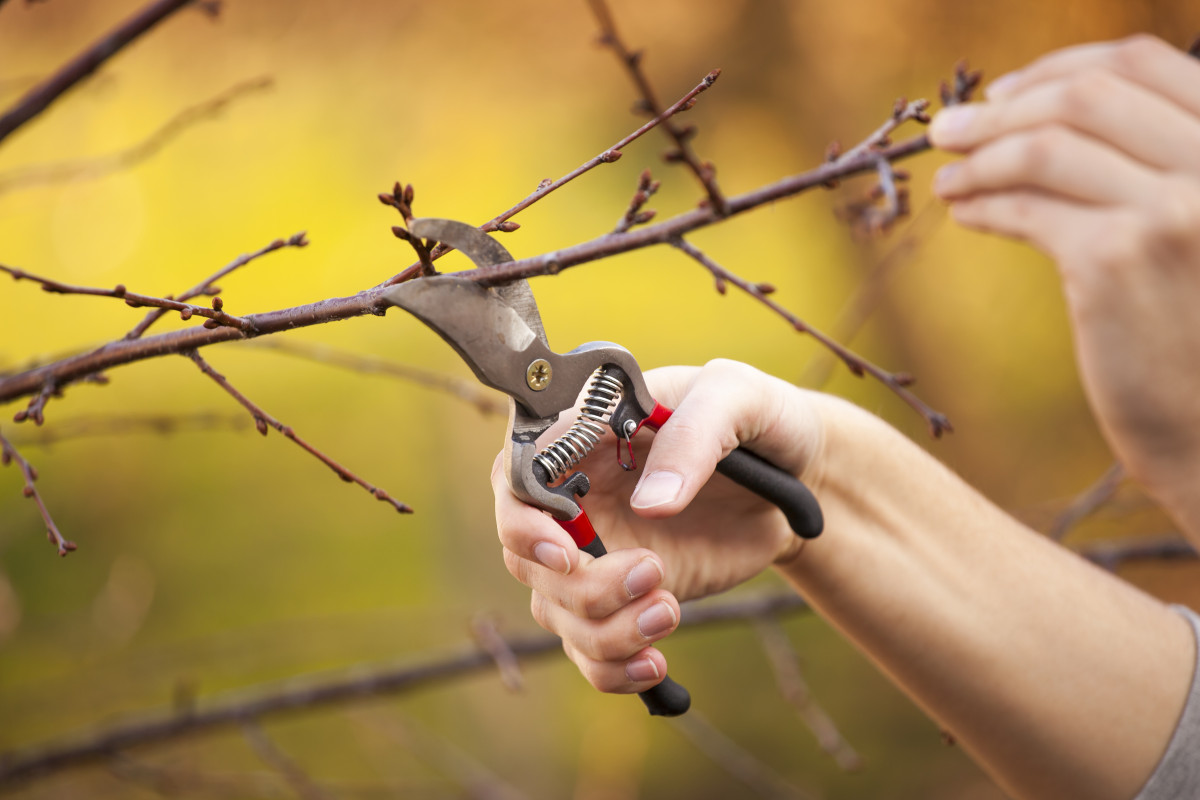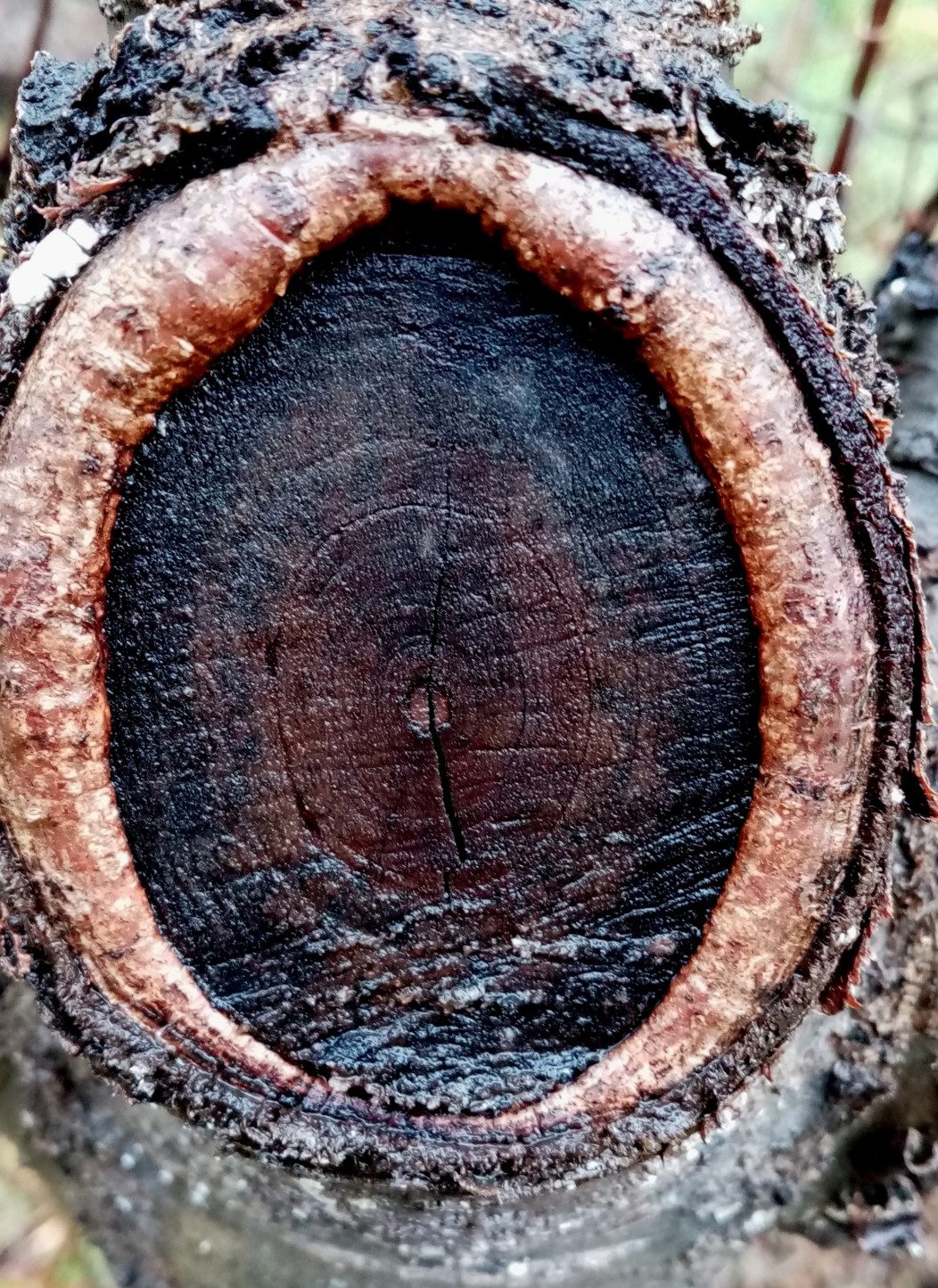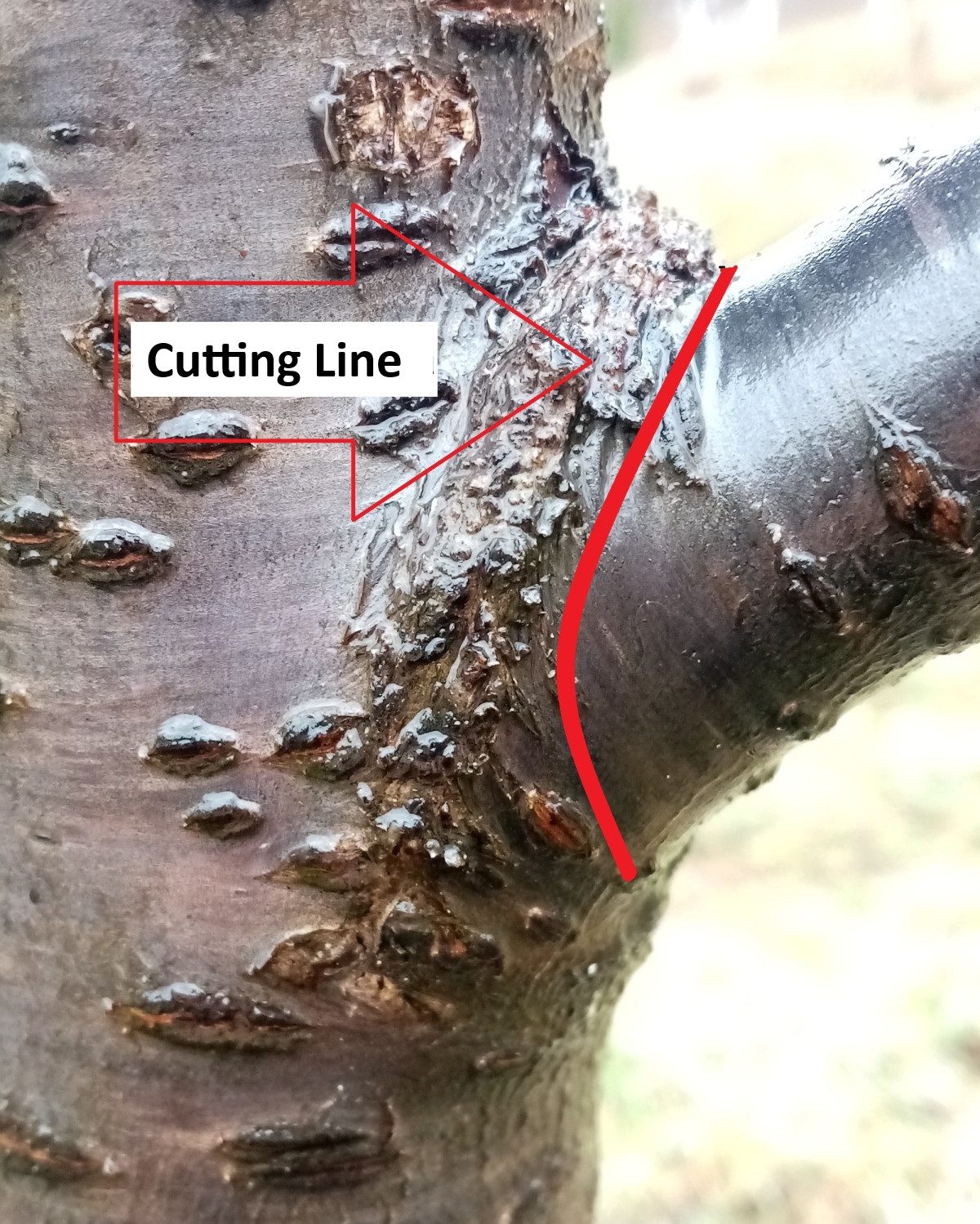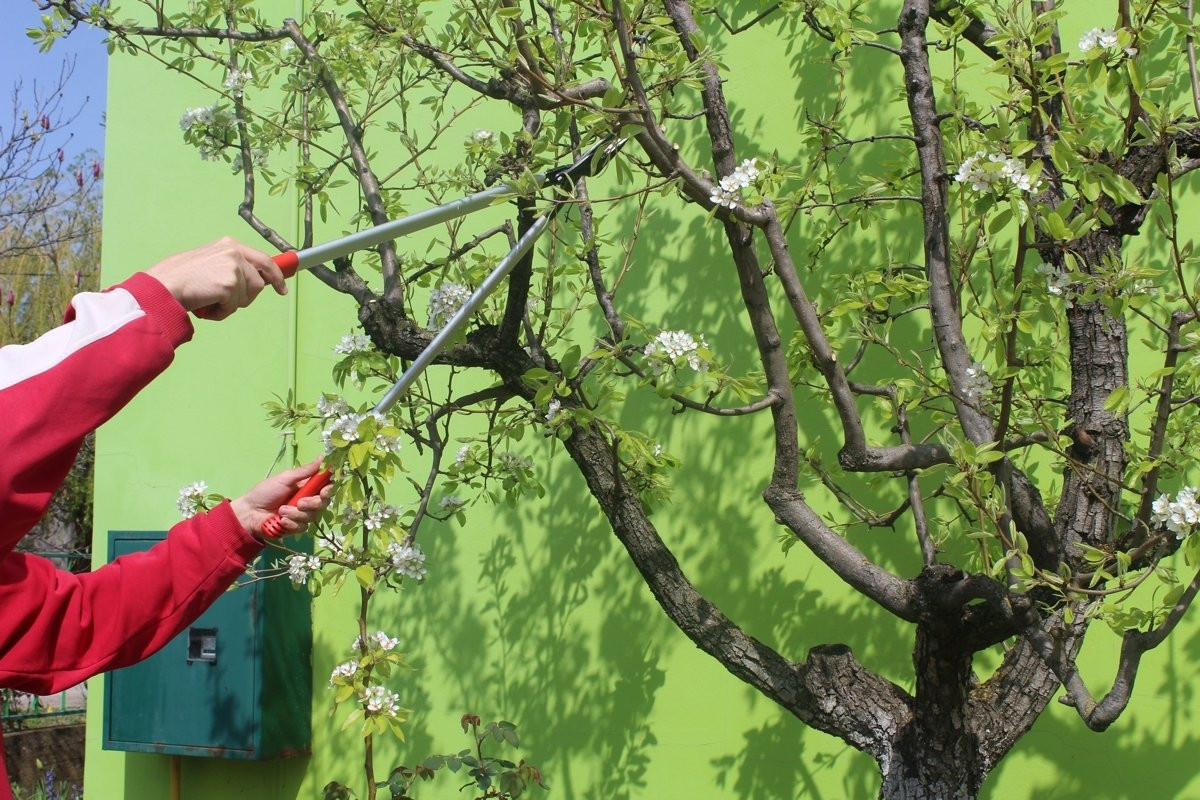Spring is always the beginning of something new: for some, it’s a wardrobe update after the winter holidays, because old things have somehow shrunk suspiciously, for others, grandiose plans to start a new, proper life. And gardeners, as usual, plan to grow a lot of tasty, beautiful, and unusual things. And update your garden. The article will be about spring pruning and shaping of fruit trees – operations that promote renewal, about when, how, and why to do this.
Why prune fruit trees?
Probably many people tried to read about the rules for pruning trees, got confused, and gave up – they still couldn’t figure it out. And there’s no need!
Pruning schemes were invented for industrial gardens, where plants are in even rows and quarters, uniform and one-dimensional, most of the processing is mechanized, and the garden is intensively exploited. An area with conditions suitable for the planned crops is selected for it. The garden must be convenient for mechanized processing – hence all the requirements.
This is not the case in a private garden. And even this is not enough, each private garden is completely unique, no matter which way you look at it: orientation to the cardinal points, soil, water supply, depression or hill, shading, wind load. But the most important thing here is the owner. Who is his own master and no one can dictate to him. He decides for himself what and how he will grow and he struggles with his decisions.
With sanitary pruning, everything is clear: if it’s broken, dried out, or frozen, it needs to be cut out. But with the formation, it’s more complicated. Once you start it, you can’t quit; it’s too expensive. Left without constant shaping, the tree immediately unravels and rushes with all its might, growing new shoots in bunches and brooms in a variety of directions. Therefore, with formation there are two acceptable options – either start or not start.
The tree is not bad, given the right conditions (location, soil, watering, sufficient lighting) it will form itself. It will begin to bear fruit when the time comes, and, growing every year, will increase the harvest to the point of “pot, don’t cook!”, complicating the owner’s life only with surplus harvest.
Shaping is labor-intensive, requires work to be performed several times per season, and requires knowledge and skills to complete. Therefore, when you pick up a saw and pruning shears, you should ask yourself: why?
For example, we form our trees in a compact version, pursuing several goals:
- Low, evenly formed trees are easier to cover with bird nets during fruiting. The forest is behind the fence, birds are sitting on all the branches, watching over the ripening.
- It’s easier to ration the harvest – we don’t need anything extra, it’s better to have a larger harvest every year.
- It’s easier to collect directly from the branches without waiting for them to fall off.
- take up less space, you can plant something else.
Thus, the first step before spring training is to decide: do I need it?
If it is irrevocably decided that it is necessary, we take a tool (secateurs, garden saw, hacksaw, stationery knife for cleaning the contour), and a ladder, and proceed, having read the necessary conditions.
What should you consider when pruning fruit trees in the spring?
1. Any pruning, regardless of whether it is sanitary or corrective, must be done with a sharp tool. Only in this case will the tree be able to effectively close the wound from infection, quickly growing a bark ridge. The bark ridge forms the cambium – a green layer between the bark and wood. Therefore, when trimming branches, it is advisable to additionally trim the cut contour with a stationery knife – this will make the overgrowth more active.
2. When pruning, there should be no stumps left without buds. The part of the branch without a bud will die and serve as a source of infection. The branch cut should be made as close as possible to the trunk or base of another branch, along the outer edge of the bark overhang.
3. Even the most drastic pruning should not reduce the crown volume by more than 30% if the tree bears fruit. It’s better to do it step by step.
4. When pruning, it is necessary to maintain spatial balance: if a large branch is cut off on one side, you need to proportionally reduce the number of branches on the other.
5. No matter how much you would like to limit the volume of the crown, in no case should you remove all or most of the young growth. Auxins (growth hormones) are produced precisely in the tips of the shoots.
7. Cut thick branches in two or even three steps to avoid tearing off part of the wood with bark – such wounds heal very poorly and often give rise to rot and hollows.
8. The weaker the growth of the tree, the less pruning it should undergo.
9. Branches growing at an angle of less than 30° to the trunk must be cut out – they usually break off painfully, trapping the bark and part of the wood.
Sanitary pruning of fruit trees in spring
On the one hand, the procedure is simple and obvious, on the other – not particularly so. In theory, everything seems to be clear, but when you approach the tree, the whole theory immediately disappears from your head. Even where it is broken, it is not particularly clear: Carefully cut below the breakpoint or remove the entire branch. There are no single solutions and you need to act according to the situation.
Part of the branch can be left if it grows in the right direction, and does not bother anyone, and there will be buds below the cut site, from which new shoots will grow.
It is pruned in such a way that the upper bud produces a shoot that will eventually replace the broken part.
Sanitary pruning also includes the procedure for removing shoots growing inside the crown. There, inside, there is nothing good for the branch: in summer there is continuous shadow, poorly ventilated and a wonderfully cozy place for pests and pathogenic fungi. So all shoots, and even large branches directed into the crown, need to be removed, let the rest be better illuminated and ventilated.
Shoots growing vertically upward – “tops”, consuming a significant amount of tree resources, are busy growing foliage and wood – fruits cannot be expected on them in the near future. If there are no plans to convert these shoots from growth to fruiting ones, it is better to remove them.
Branches with bark that has burst along the length are cut out – nothing good will grow from such a branch, as well as branches that are frankly diseased. When cutting off a diseased twig, it is useful to look at the cut: the wood can be damaged from the inside by a fungus or larvae, for example, apple glass, a pest very typical for the middle zone. In stone fruits, the core may be affected by polypores, in which case it is brown in color. If such troubles are discovered, it is necessary to cut down to the living wood; sometimes the entire skeletal branch is removed.
Formative pruning of fruit trees
Formative pruning is designed to give the fruit tree a shape that is convenient for the gardener.
There is a difference in the spring forming:
- supporting, that is, the tree as a whole is formed, and in the spring everything that does not fit into this form is removed;
- shaping a tree that has not undergone this operation or has been subjected to it for a long time and is already wildly overgrown.
In maintenance pruning, almost everything is obvious: the tops, which grow with terrible force in an active tree, are removed; everything growing inside the crown is removed; Too long growths above the bud, directed in the direction necessary for growth, are shortened.
By the way, if a tree grows too many new shoots to the detriment of fruiting, it is worth taking special measures: limit or even stop nitrogen fertilizing and begin to bend the branches, giving them a more horizontal position. This operation stimulates the transition of the branch from a growth to a fruiting state.
Shaping a wildly overgrown tree is much more difficult. First, you will have to walk around the tree from all sides and determine which shape in this particular case is more convenient and what, in fact, you would like to have?
Most often it is necessary to lower the crown so as not to climb high for the fruits. In this case, the trunk above 4-5 skeletal branches is cut off completely, the skeletal branches themselves are trimmed so that they are evenly distributed around the trunk and do not overlap each other. All tops and branches growing inside the crown are cut out.
There is no need to cut everything at once, and you can be left without a harvest; it is advisable to act in stages, over several years – the work is not quick.
When the trunk is removed, a wonderful place is created for grafting “behind the bark”. In this case, we graft 3-4 cuttings and then form a second tier from them, bending (very carefully!) the branches that grew from the grafts in different directions.
It often happens that large skeletal branches of a tree interfere with the passage or other plants. It happens that something interferes with the tree itself: the wall of a house, outbuildings, a fence. In this case, it makes sense to consider other formatting options. Trees are plastic and can grow in absolutely incredible shapes – fan, bush, cup-shaped, spindle-shaped, cordon-shaped, lollipop-shaped and many others.
You just need to choose the right one, set the direction during the first spring pruning and work in this direction constantly. That is, there will be annual spring pruning and removal of unnecessary shoots (pinching) twice during the summer.






